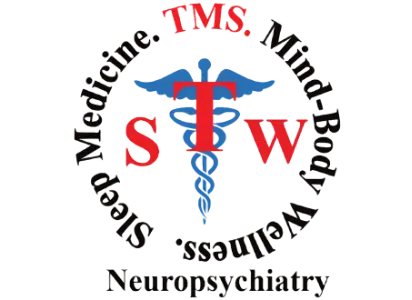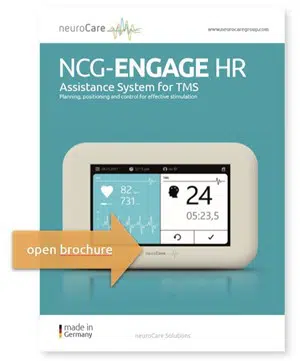[ezcol_1half]
[/ezcol_1half][ezcol_1half_end]
[/ezcol_1half_end]
At STW center, we use ‘Alternative B3 method’ for determining the precise location of ‘Therapy Hot Spot’, which requires 3 different head measurements. Therapy hot spot is ‘ left dorsolateral prefrontal cortex’ and this method is most widely practiced in clinical settings. Because this method takes into account patients head measurements, location thus found is very close to the actual MRI based DLPFC.
Cardiac Guided TMS (NCG TMS)
Neuro-NCG-ENGAGE HR – technology for Neuro-Cardiac guided rTMS
Many studies suggest a role of the connectivity of the dorsolateral prefrontal cortex (DLPFC) and the subgenual anterior cingulate cortex (sgACC) in depression. Prior research has demonstrated that neuromodulation of either of these nodes modulates parasympathetic activity and results in a heart rate deceleration.
A new method called “Neuro-Cardiac Guided rTMS (NCG-rTMS)” helps to adequately target the frontal-vagal network. Iseger et al.1,2 show that the NCG-rTMS reliably locates the point of greatest heart rate deceleration at the DLPFC. Data from other research groups could also replicate this. Due to functional differences, this point is located at different positions in the individual patients. In many people it is located in the FC3/FC4 range. In this case rTMS treatment according to the 5 cm rule is recommended. In some people, however, it is localized around F3 or F4. Then the rTMS according to the BeamF3 method will probably be more effective.
The NCG-rTMS thus offers a way to find the most effective individual access to the frontal-vagal network via feedback of the heart rate.
2 Iseger TA et al., 2018:
Optimizing TMS Treatment for Depression Using Cardiac Response With Neuro-Cardiac-Guided-TMS (NCG TMS) (https://www.biologicalpsychiatryjournal.com/article/S0006-3223(18)30254-3/fulltext)
Neuronavigation With Localite System
At STW center, later this year we plan to add the ‘Neuronavigation with Localite’ system to our Magventure TMS therapy. This will allow high level of precision for TMS stimulation targets. This will be very helpful in using TMS therapy in patients with ‘Neuro-rehabilitation, chronic pain syndromes or other neurological disorders’.
Navigated Localite TMS Navigator is a navigation system for transcranial magnetic stimulation (TMS) which is configurable according to your needs and wishes. With Localite TMS Navigator you can plan stimulation areas and monitor and record the correct positioning of patient and coil.
https://www.magventure.com/tms-research/localite-neuronavigation
Stimulate selected brain regions with high precision and reliability every time
Plan stimulation areas, visualize the stimulation spot, and monitor and record the precise position of the research subject and coil with complete replicabibility. The turnkey solution provides full integration with MagVenture stimulators, allowing for automatic and easy exchange of all the needed information such as intensity, coil and stimulator type, MEPs, and temperature






